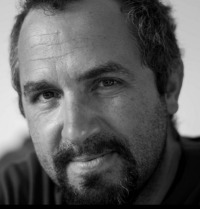
Guido Zolezzi
 Rector's delegate for Development Cooperation
Rector's delegate for Development Cooperation
University of Trento
 Full professor
Full professor
Department of Civil, Environmental and Mechanical Engineering
|
|
Education |
|
I got my Master degree in Environmental Engineering at the University of Genova in 1996, with a final degree thesis focused on a seminanalytical 3D model for alternate bars formation with dominant suspended load transport in straight channels. The key outcomes of my MSc thesis are published in this paper. In 1997 I obtained the professional qualification as an engineer in Italy. At the University of Genova I also did my PhD (defence in 2000) focused on the morphodynamics of meandering rivers. My research was mainly based on mathematical (analytical) morphodynamic modelling, with an important experimental component through physical scale modelling (hydraulics lab). In a side project on a braided river, in the last year of the PhD I had my first consistent fieldwork experience in river morphodynamics. The main outcomes of my doctoral research can be found here:
The Department where I did my PhD changed its name since those times and here's the present link. In the early stages of my career I complemented my academic training with training and practice in social service, educational counseling and international cooperation for development. This set the basis for my continued seeking of interdisciplinary integration and innovation in teaching, especially in relation to engineering education. If you are interested, here's some more info on the organizations with which I developed my complementary training: |
|
|
|
Research interests |
|
My research interests generally focus on rivers and natural freshwater systems; they have evolved during my career and cover basic and applied research topics. In terms of basic research I am curious to investigate how river bars and meandering rivers evolve in real-world river systems, and to understand which elements of such dynamics are reproduced by morphodynamic theories and models developed in the last decades. Recently I am particularly motivated to explore how bars and meanders co-evolve with riparian vegetation dynamics.
My interest for applied research has been steadily growing during my career: I am fundamentally interested in exploring the interaction and co-evolution of natural and social-human systems, with particular reference to sustainable river and water management in different geographical and cultural contexts. In this perspective I tend to join the emerging paradigms of socio-geomorphology and socio-hydrology, and since 2006 I started adopting an eco-hydraulic approach.
I am convinced of the importance of the boundary work at the interface between science and practice, for an effective uptake of research resutls into more sustainable and effective management practices. |
|
|
|
Attachments |


